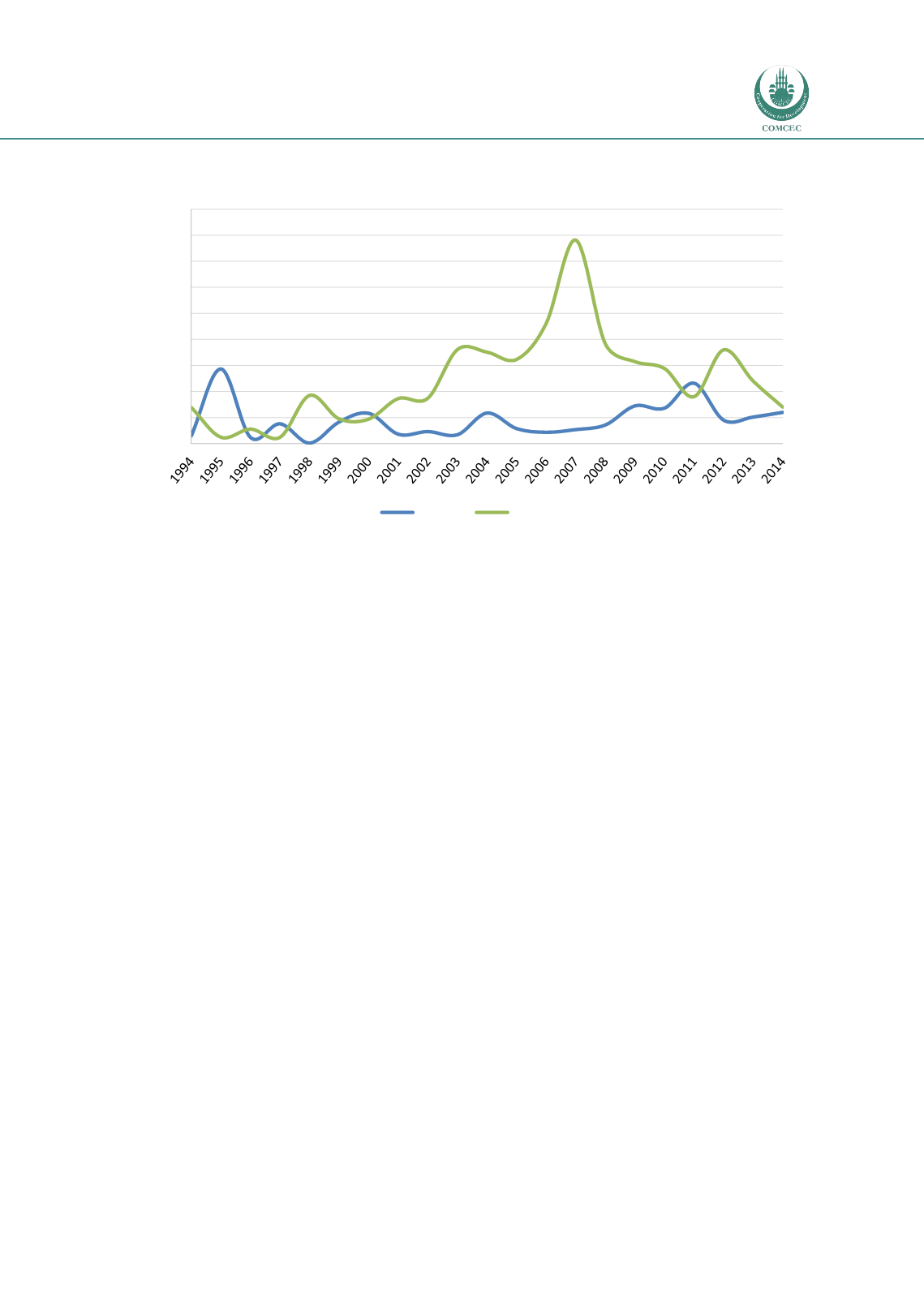

Promoting Agricultural Value Chains
In the OIC Member Countries
111
Figure 5-20 Cotton exports and imports of Pakistan, 1994-2014
Source: IndexMundi, 2015
At the same time, Pakistan continues to be a major exporter of cotton. In 2014, exports
amounted to 600,000 bales and are forecast at 500,000 bales in 2015 due to an expected weak
cotton harvest. However, exports of cotton products, especially as textiles and garments, are
expected to increase, as Pakistan has been granted “Generalized System of Preferences” (GSP
Plus) status to the European Union from 2014 through to 2017, which allows 20 percent of
Pakistani exports to enter the EU market at zero tariff and 70 percent at preferential rates.
These concessions serve to help Pakistan’s economy recover from the devastating 2010 floods.
Since 30 percent of Pakistan’s textile exports are destined for the EU, the GSP Plus status may
increase textile exports to the EU by US$ 1 billion every year. This is expected to raise imports
of cotton to satisfy export demands (USDA, 2015).
Of particular note is the increasing trade in cotton and cotton products between Pakistan and
India which has developed since 2003/04, despite continued unresolved political issues.
Cotton imported from India increased from US$ 455 million in 2004/05 to US$ 716 in
2012/13, making India the biggest supplier of raw cotton for Pakistan and turning Pakistan
into the biggest destination for Indian agricultural exports (39 percent of total agricultural
exports) (Chand & Saxena, 2014). Vice versa, Pakistan also exports small amounts of raw
cotton to India, but mostly sells value added cotton fabric and textiles to India, which in
2012/13 was worth US$ 60 million (Chand & Saxena, 2014). The growing trade is facilitated
through the reduced tariff limits under the South Asian Free Trade Area (SAFTA), which
dictates a reduction of tariffs to 5 percent with effect from 1 January 2013.
5.6.6
Conclusions and lessons learned
Pakistan is one of the main players in global cotton production and consumption, and the
cotton and textile sectors are the mainstay of the country’s economy. While yields and cotton
output have increased over the past two decades, Pakistan has not been able to take full
advantage of its cotton production. Seed quality and agricultural practices are generally poor,
and pest infestations and cotton diseases lead to huge economic losses each year. Therefore,
0
500
1000
1500
2000
2500
3000
3500
4000
4500
1,000 bales (1 bale = 170kg)
Exports
Import

















